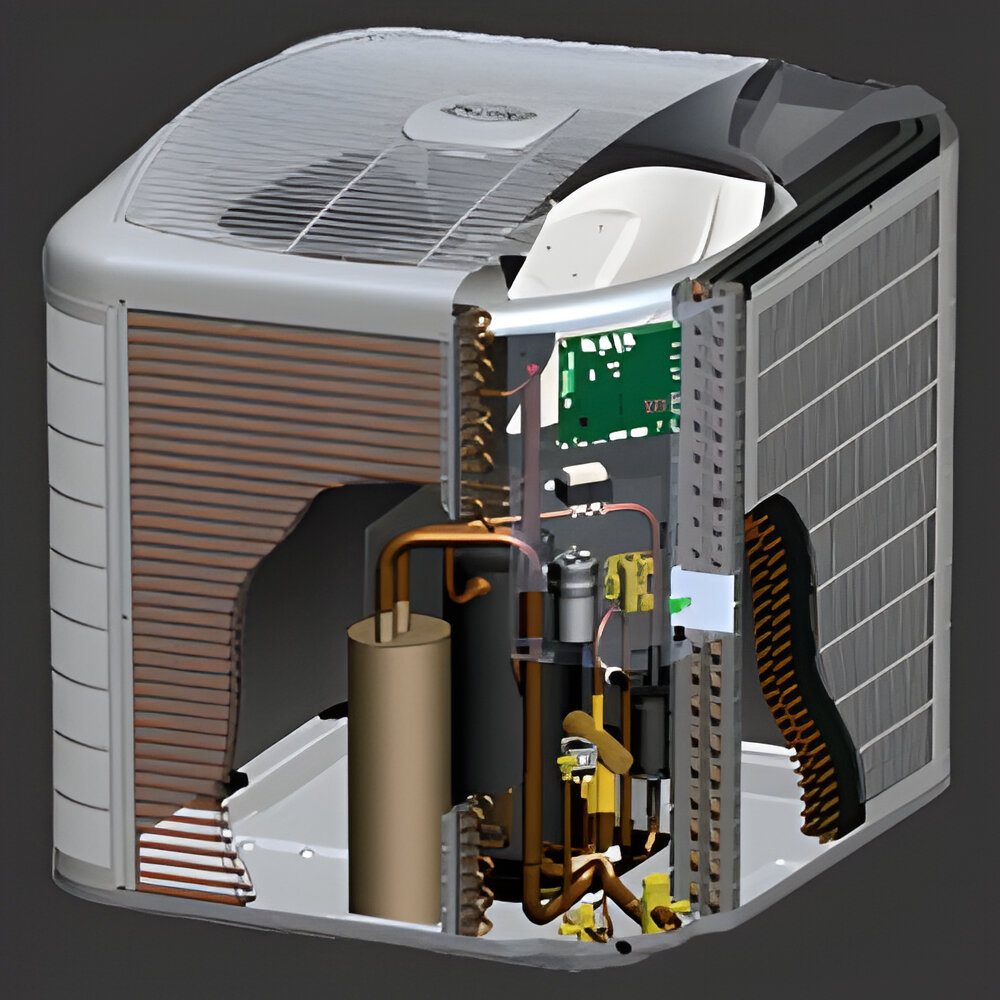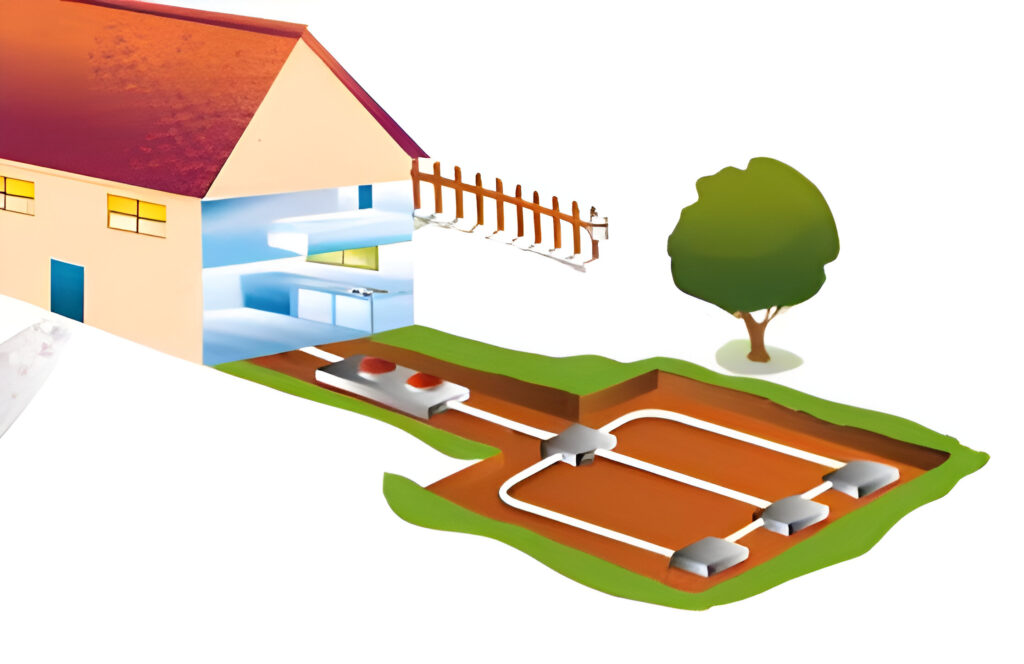Cooling
Areas We Service

A.C. Rimmer provides Geothermal, Heating, Cooling, Plumbing and other services to Central Pennsylvania, including:
- Harrisburg
- Dauphin
- Steelton
- Humelstown
- Hershey
- Susquehanna Township
- Mechancisburg
- Carlisle
- Camp Hill
- Lemoyne
- New Cumberland
- Wormleysburg
- Dillsburg
- Perry County
Cooling Services
The Quest® 100 pictured above makes the perfect dehumidifier for small projects and spaces. (1)
Dehumidifiers
If excessive moisture, musty odors, and uncomfortable living conditions are plaguing your home, it might be time to explore the benefits of a dehumidifier.
Ideally, your indoor humidity levels should be adequately regulated by your HVAC system. Unfortunately, HVAC systems don’t always perform this task flawlessly. They might struggle to counteract the relentless moisture seeping into your living space. If you’ve noticed issues like condensation on windows, a damp, clammy feeling in the air, or mold growth, a dehumidifier could be the solution you’re seeking.
Dehumidifiers come in various shapes and sizes. You can opt for a whole-home dehumidification system or individual room units. To determine the most suitable option for your needs, consider consulting with an HVAC professional at A.C. Rimmer. They can assess whether your entire house suffers from excess humidity or if it’s localized to specific areas.
When it comes to dehumidifiers, you have choices, much like with humidifiers. There are refrigerant-based dehumidifiers, which work by cooling and condensing moisture from the air, and desiccant dehumidifiers, which absorb moisture on a special material. Your choice largely depends on personal preferences and the specific humidity issues you face. Your HVAC experts at A.C. Rimmer can guide you in making the right selection.
The cost of a dehumidifier system can vary greatly depending on the type and style you choose, as well as installation expenses. To gain a clear understanding of the investment required, it’s best to consult technicians at A.C. Rimmer. However, keep in mind that neglecting excessive humidity problems can lead to issues far costlier than the initial installation, such as structural damage, mold remediation, and health-related problems.
While small dehumidifiers available in stores may seem low-maintenance, neglecting them can lead to mold and mildew issues. These problems can exacerbate respiratory difficulties. If you’re contemplating a dehumidification system for your home, consider investing in a maintenance plan from A.C. Rimmer. Such plans typically include regular upkeep, ensuring your dehumidifier functions optimally without causing unintended complications.
Ready to take control of indoor humidity levels in your home or commercial property? A.C. Rimmer offers a range of dehumidifiers perfectly suited to your needs!
The Quest® 100 pictured above makes the perfect dehumidifier for small projects and spaces. (1)

Ductless ACs
At the most basic level, ductless AC is one outdoor unit (a compressor, condenser coil, and fan) and one indoor unit (evaporator coil and fan) connected with copper tubing and electrical wiring.
With one outdoor unit you can also install multiple indoor units in rooms throughout your home. There are several styles of indoor units available, and installation only requires a hole in the wall for the wiring and refrigerant line, making ductless AC systems among the easiest and most versatile systems to install. Cassette units can be mounted directly to the ceiling surface
Outdoor units can be strategically placed to minimize noise heard in living spaces or from patios or outdoor gathering spaces. Narrow cabinets make installation possible in small outdoor spaces or on small lots.
At the most basic level, ductless AC is one outdoor unit (a compressor, condenser coil, and fan) and one indoor unit (evaporator coil and fan) connected with copper tubing and electrical wiring.
With one outdoor unit you can also install multiple indoor units in rooms throughout your home. There are several styles of indoor units available, and installation only requires a hole in the wall for the wiring and refrigerant line, making ductless AC systems among the easiest and most versatile systems to install. Cassette units can be mounted directly to the ceiling surface
Outdoor units can be strategically placed to minimize noise heard in living spaces or from patios or outdoor gathering spaces. Narrow cabinets make installation possible in small outdoor spaces or on small lots.


Conventional ACs
A higher SEER rating indicates superior energy efficiency. SEER ratings typically range from 13 to 21.
Modern air conditioners typically offer SEER ratings ranging from 13 to 21. To qualify for ENERGY STAR certification, central air conditioners must have a SEER rating of at least 14.5. The minimum required SEER rating for air conditioners is 13.
In a split-system central air conditioner, the outdoor unit houses the condenser and compressor, while the indoor unit contains the evaporator. In many split-system air conditioners, the indoor unit may also accommodate a furnace or the indoor component of a heat pump. The evaporator coil of the air conditioner is typically situated within the cabinet or primary supply duct of this furnace or heat pump. If your home is equipped with a furnace but lacks an air conditioner, a split-system is the most cost-effective option for installing a central air conditioning system.
Need to know what conventional ACs would work best in your home or commercial property? An A.C. Rimmer technician can help!


Geothermal Systems
If you’re looking for a solution that is economical and earth friendly, geothermal is the way to go for home heating, as it has incredibly low emissions of greenhouse gases and the extraction process is harmless to the environment. If you’re interested in getting on the right track with geothermal energy, contact us today and schedule an appointment with an A.C. Rimmer technician.
If you’re wary about the usage of geothermal energy in your home, here is what you need to know about geothermal heating:
Geothermal is relatively new in the U.S., but it’s existence has been dated back to the 3rd century BC in China where it was found in the form of a hot spring. Italy began using geothermal energy for heating purposes in 1904, where it was used for bathing, cooking, and home heating.
The word geothermal itself is derived from the Greek words meaning earth and heat. This type of heat source is extremely eco-friendly, as it produces nearly no harmful gases and the impact to the environment is next to nothing. The drilling for geothermal heating is low in comparison to other types of energy and it is completely renewable, as it comes directly from the heat the Earth naturally provides.
Geothermal energy isn’t dependent on the sun, like solar energy, so there is no worry when an overcast day comes along.
Geothermal is not only for heating your home. It can also be used for cooling as the system will pull the heat from your house and redeposit it into the Earth. This type of system is reliable for providing comfortable temperatures inside your home, at all times.
While the initial investment may be pricier than other systems, the costs associated with running your geothermal system will be much less. You won’t be paying hefty gas or oil costs, and the energy pump will actually cut your energy costs by up to 40%.
Tax Credits & Incentives
As of August 2022, the tax credit for installing geothermal heat pump systems has been extended and will remain in effect until 2034. Any geothermal equipment that harnesses stored solar energy from the earth for heating and cooling and meets the ENERGY STAR criteria at the point of installation qualifies for this tax credit. Notably, there is no upper limit on the credit amount, and you can claim it as many times as needed.
US Tax Credits Through 2034
You can stack the energy tax credit with solar and wind credits, along with credits for energy efficiency upgrades. Specifically, there’s a federal tax credit of 30% available for residential ground source heat pump installations, which has been extended until December 31, 2032. However, it’s important to note that this incentive will decrease to 26% for installations in 2033 and further reduce to 22% in 2034, so act quickly to save the most on your installation.

Check Out Our Work
Technicians at A.C. Rimmer replaced old outdoor conventional air conditioners with updated, energy efficient units:




Contact
Hours
Monday – Friday
7:30 a.m. – 4:00 p.m.
Licenses
PA Contractor PA001803
MD-HVACR-01-125129
MD Master Plumber/Gas Fitter 113315
Backflow 31124
Terms of Use
Privacy Policy
Cookie Policy
Accessibility Statement
© 2023 All rights reserved.



